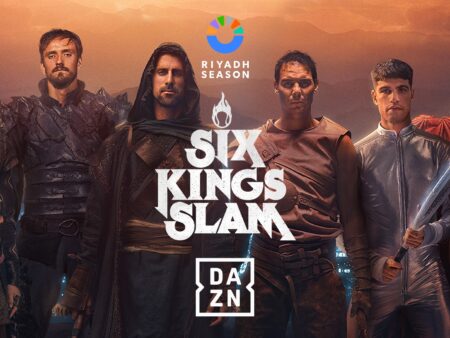
A courtroom sketch depicts the five NHL players at the center of the 2018 sexual assault trial.
In the high-stakes world of professional hockey, where the roar of the crowd can be as deafening as the silence of a boardroom decision, the National Hockey League recently found itself navigating a particularly treacherous patch of ice. Five players – Michael McLeod, Dillon Dube, Cal Foote, Alex Formenton, and Carter Hart – previously facing charges stemming from a 2018 sexual assault allegation, have been acquitted. The league’s subsequent decision to reinstate them has ignited a fervent debate, starkly illustrating the complex interplay between legal outcomes, public perception, and the undeniable gravitational pull of athletic talent.
Acquittal: A Legal Victory, A Public Quandary
The saga began in 2018, following a gala celebrating the Canadian world junior team`s gold medal, which led to an encounter that would embroil these players in a legal battle for years. Fast forward to 2024, arrests were made, followed by a two-month trial in London, Ontario. On July 24, 2025, Superior Court Justice Maria Carroccia delivered her verdict: all five players were acquitted of all charges, with Michael McLeod also cleared of being a party to the offense.
Legally, the matter is settled. The players are innocent in the eyes of the law. However, as is often the case in high-profile situations, the court of public opinion operates with its own set of rules. The immediate aftermath of the verdict saw a wave of online outrage, succinctly summarized by the widely echoed sentiment: “not guilty doesn`t mean innocent.” This disjunction between legal vindication and perceived moral culpability placed the NHL in an unenviable position.
The NHL`s Tightrope Walk: Discipline Without Guilt?
On September 12, 2025, the NHL announced its decision: the players would be eligible to sign with teams starting October 15 and return to play on December 1. Yet, this wasn`t a simple “welcome back.” The league, acutely aware of the intense scrutiny, issued a statement acknowledging that the players` conduct, even without a criminal conviction, “fell woefully short of the standards and values that the league and its member clubs expect and demand.”
This led to a curious form of administrative discipline – a sort of symbolic reprimand for actions that, while not criminal, were deemed unacceptable by the league`s internal code of conduct. The players, according to the NHL, expressed “regret and remorse for his actions,” leading to this “formal league-imposed discipline.” It`s a delicate dance: recognizing a legal acquittal while simultaneously asserting moral authority. As one sports lawyer, Greg Gilhooly, aptly questioned,
“How do you suspend an innocent person?”
The answer, it seems, lies in the murky waters of moral clauses and public relations – a testament to the fact that image management is often as critical as legal defense in modern professional sports.
Talent vs. Turmoil: The Ultimate Decision for Teams
With the NHL`s green light, the spotlight now shifts to individual teams. This is where the pragmatic, often unsentimental, nature of professional sports truly reveals itself. Teams must weigh the undeniable talent some of these players possess against the potential for significant public backlash, fan alienation, and sponsor unease. Gilhooly put it plainly:
“There are going to be different amounts of justice and retribution meting out depending upon how good a hockey player you are.”
- Carter Hart, for instance, was the Philadelphia Flyers` starting goaltender with a respectable career save percentage. His skill level makes him a high-value asset, and teams will likely “take some abuse for it” in signing him, a cost they may deem acceptable for a player of his caliber.
- In stark contrast, players considered “marginal” might find teams “shy away,” unwilling to absorb the potential PR headache without a significant on-ice return to justify it.
- Alex Formenton, who hadn`t played in the NHL since 2022 and recently signed with a Swiss club, presents a different calculus. His path back, if any, will be considerably steeper, illustrating that for some, the professional cost of these events extends beyond legal outcomes.
This stark reality underscores a cynical, yet often accurate, assessment of professional sports: talent frequently trumps perceived moral shortcomings, especially when the legal system has cleared the path. It`s a calculation of risk versus reward, where the “reward” is often measured in wins and, ultimately, revenue.
Hockey Culture Under the Microscope
The entire episode has also reignited discussions about “hockey culture” – a term that has become synonymous with everything from camaraderie to alleged systemic issues of accountability and behavior. Critics online were quick to point fingers, suggesting that the league`s actions, despite its stated principles, felt like a public relations maneuver designed to weather the storm. The NHLPA, on the other hand, expressed satisfaction, stating the players “cooperated with every investigation” and looked forward to their return, effectively closing their chapter on the matter with an air of finality.
This ongoing tension highlights a broader societal shift: what was once tolerated or overlooked in sports is now increasingly scrutinized. While the legal system provides one framework for justice, public discourse and the evolving ethical expectations of athletes and institutions provide another, often more potent, form of accountability. The NHL, much like other major sports leagues, finds itself in a perpetual state of adaptation, attempting to reconcile its past with a future demanding greater transparency and integrity from its athletes and leadership.
Moving Forward: An Uneasy Peace?
As these five players potentially prepare to lace up their skates once more, their return will be met with a spectrum of reactions ranging from acceptance to enduring skepticism. For the NHL, this chapter may be officially “closed” by the league and the players` association, but the ripples of this decision will continue to spread throughout the hockey world and beyond. It serves as a potent reminder that in the arena of public opinion, simply being “not guilty” is often just the opening face-off in a much larger, more complex game.
The league, its teams, and the players themselves are now tasked with navigating this uneasy peace, balancing legal precedent with moral imperative, and the pursuit of athletic excellence with the enduring demand for integrity. The ice, it seems, is thinner than ever, and every stride forward will be watched with keen attention.










